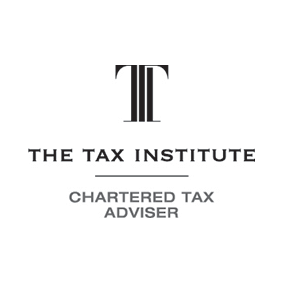March 2023 Newsletter

What’s the Deal with Working from Home?
The ATO has ‘refreshed’ the way you can claim deductions for the costs you incur when you work from home. From 1 July 2022 onwards, you can choose either to use a new ‘fixed rate’ method (67 cents per hour), or the ‘actual cost’ method depending on what works out best for your scenario. Either way, you will need to gather and retain certain records to make a claim.
The first issue for claiming any deduction is that there must be a link between the costs you incurred and the way you earn your income. If you incur an expense but it doesn’t relate to your work, or only partially relates to your work, you cannot claim the full cost as a deduction.
The second key issue is that you need to incur costs associated with working from home. For example, if you are living with your parents and not picking up any of the expenses for running the home then you can’t claim deductions for working from home as you have not incurred the expenses, even if you are paying board (the ATO treats this as a private arrangement).
Let’s take a look at the detail:
The new ‘fixed rate’ method
Previously, there were two fixed rate methods to choose from for the 2021-22 income year:
· A cover-all 80 cents per hour rate for expenses incurred while working from home (which was available from 1 March 2020). This COVID-19 related rate was intended to cover all additional running expenses incurred while working from home; or
· If you had a space dedicated to work but were not running a business from home, you could claim 52 cents for every hour you worked from home to cover the running expenses of your home. This rate doesn’t cover certain items such as the depreciation of electronic devices, which can be claimed separately.
It’s clear that working from home arrangements are here to stay for many workplaces even though COVID restrictions have eased. So, from the 2022-23 financial year onwards, the ATO has combined these two fixed rate methods to create one revised method accessible by anyone working from home, regardless of whether they have a dedicated space or are just working at the kitchen table.
The new rate is 67 cents per hour and covers your energy expenses (electricity and gas), phone usage (mobile and home), internet, stationery, and computer consumables. You can separately claim the cost of the decline in value of assets such as computers, repairs, and maintenance for these assets, and if you have a dedicated home office, the cost of cleaning the office. If there is more than one person working from the same home, each person can make a claim using the fixed rate method if they meet the basic eligibility conditions.
What proof do the ATO need that I am working from home?
To use the fixed rate method, you will need a record of all of the hours you worked from home. The ATO has warned that it will no longer accept estimates or a sample diary over a four week period. For example, if you normally work from home on Mondays but one day you have an in-person meeting outside of your home, your diary should show that you did not work from home for at least a portion of that day.
Having said that, the ATO will allow taxpayers to keep a record which is representative of the total number of hours worked from home during the period from 1 July 2022 to 28 February 2023.
There is nothing in the ATO guidance to suggest that claims are limited to standard office hours. That is, if you work from home outside standard office hours or over the weekend, then make sure you keep an accurate record of the hours you are working so that you can maximise your deductions.
You also need to keep a copy of at least one document for each running cost you have incurred during the year which is covered by the fixed rate method. This could include invoices, bills or credit card statements. Where bills are in the name of one member of a household but the cost is shared, each member of the household who contributes to the payment of that expense will be taken to have incurred it. For example, a husband and wife, or flatmates where they jointly contribute to costs.
You need to keep these records for five years so that if the ATO come calling, you can prove your claim. If this proof is not available at the time, the deduction will be denied. If your work from home diary is electronic, ensure you can access this diary over time (such as producing a PDF summary of your calendar clearly showing the dates and times of your work at the end of each financial year).
The ‘actual’ method
Some people might find that the actual method produces a better result if their expenses are higher. As the name suggests, you can claim the actual additional expenses you incur when you work from home (and reduce the claim by any personal use and use by other family members). However, you will need to ensure you have kept records of these expenses and the extent to which the expenses relate to your work. Using this method, you can claim the work related portion of:
· The decline in value of depreciating assets – for example, home office furniture (desk, chair) and furnishings, phones and computers, laptops or similar devices.
· Electricity and gas (energy expenses) for heating, cooling and lighting.
· Home and mobile phone, data and internet expenses.
· Stationery and computer consumables, such as printer ink and paper.
· Cleaning your dedicated home office.
Be careful with this method because the ATO are looking closely to ensure these expenses are directly related to how you earn your income. For example, you can’t claim personal expenses such as coffee, tea and toilet paper even if you do use these items when you are at work. Nor can you claim occupancy expenses such as rent, mortgage interest, property insurance, and land taxes and rates unless your home is a place of business. It is unusual for an employee’s home to be classified as a place of business.
I run a business from home, what can I claim?
Where your home is also your principal place of business and an area is set aside exclusively for business activities, you can potentially claim a deduction for an appropriate portion of occupancy expenses as well as running costs. An example would be a doctor who runs their surgery from home. The doctor may have one-third of the home set aside as a place of business where they see patients. It is important to keep in mind that Capital Gains Tax (CGT) might be payable on the eventual sale of the home. While your main residence is normally exempt from CGT, the portion of the home set aside as a place of business will not generally qualify for the main residence exemption for the period it is used for this purpose, although if you are eligible, the small business CGT concessions and general CGT discount may reduce any resulting capital gain.
Future earnings for super balances above $3m taxed at 30% from 2025-26
The Government has announced that from 2025‑26, the 15% concessional tax rate applied to future earnings for superannuation balances above $3 million will increase to 30%.
The concessional tax rate on earnings from superannuation in the accumulation phase will remain at 15% up to $3m. From $3m onwards, the rate will increase to 30%. The amendment applies to future earnings; it is not retrospective. 80,000 people are expected to be impacted by the measure. The announcement doesn't propose any changes to the transfer balance cap or the amount that a member can have in the tax-free retirement phase.
The ‘Super’ Wars
A consultation paper released by Treasury has sparked a national debate about the role, purpose and access to superannuation ahead of the 2023-24 Federal Budget.
What is the purpose of superannuation? At first glance, the consultation released by Treasury in February titled Legislating the objective of Superannuation sounds innocuous enough. The consultation seeks to anchor future policies relating to superannuation to a legislated objective:
The objective of superannuation is to preserve savings to deliver income for a dignified retirement, alongside Government support, in an equitable and sustainable way.
But what seems self-evident has opened a Pandora’s Box of what superannuation is not. If superannuation is to “preserve savings”, that is, restricting access to superannuation savings to retirement only, by default it is not a means of accumulating wealth in a concessionally taxed environment. It is not a strategy to manage intergenerational wealth. The definition would also prevent initiatives such as the COVID-19 early access scheme used widely during the pandemic to give those in financial distress access to quick cash (over 3 million people withdrew $37.8 billion from their superannuation funds). And, it is not a method of purchasing a home sooner.
As an aside, the Treasurer points out that the average super balance in Australia is $150,000 - taking account of all those with a super balance including new entrants into the workforce. For those 65 and over, the average balance is around $400,000 across all income brackets.
Superannuation and national building
The second component of the Treasury consultation is nation building. At a recent speech, the Treasurer stated, “to my mind, defining super’s task as delivering income for retirement isn’t to narrow super’s role in our economy…it’s to elevate it, and broaden it.” The consultation states: “There is a significant opportunity for Australia to leverage greater superannuation investment in areas where there is alignment between the best financial interests of members and national economic priorities, particularly given the long‑term investment horizon of superannuation funds.”
The compulsory superannuation guarantee (SG) was introduced in 1992 at a rate of 3% rising to 9% by July 2002. Now, Australia’s superannuation pool has grown from around $148 billion in 1992 to over $3.3 trillion. It now represents 139.6% of gross domestic product (GDP) and is projected to grow to around 244% of GDP by 30 June 2061. Australia’s pool of pension assets is now one of the largest in the world, and the fourth largest in the OECD.
The consultation does not define how this ambition would be achieved. *The Treasurer has ruled out changes to the existing early access hardship provisions for super. The Federal Budget is released on 9 May 2023. Look out for our update with all the relevant news to you, your business and your super.
1 July 2023 Super Balance Increase but no Change for Contributions
The general transfer balance cap (TBC) – the amount of money you can potentially hold in a tax-free retirement account, will increase by $200,000 on 1 July 2023 to $1.9 million. The TBC is indexed to the consumer price index each December.
The TBC applies individually. If your transfer balance account reached $1.7m or more at any point before 1 July 2023, your TBC after 1 July 2023 will remain at $1.7m. If the highest amount in your account was between $1 and $1.7m, then your cap is proportionally indexed based on the highest ever balance your transfer balance account reached. That is, the ATO will look at the highest amount your transfer balance account has ever been, then apply indexation to the unused cap amount. For example, if you started a retirement income stream valued at $1,275,000 on 1 October 2022 and this was the highest point your account reached before 1 July 2023, then your unused cap is $425,000 ($1.7m-$1.275m). This unused cap amount is used to work out your unused cap percentage ($425k/$1.7m=25%). The unused cap percentage is then applied to the indexation increase ($200k*25%=$50k) to create your new TBC of $1,750,000.
But don’t worry, you don’t have to calculate this yourself, you can see your personal transfer balance cap, available cap space, and transfer balance account transactions online through the ATO link in myGov. The caps on the contributions you can make into super however, will remain the same. That is, $27,500 for concessional contributions and $110,00 for non-concessional contributions. The contribution caps are linked to December’s average weekly ordinary time earnings (AWOTE) figures.
What will the ATO be Asking about your Holiday Home?
Taxpayers claiming deductions on holiday homes are in the ATO’s sights. The ATO is more than a little concerned that people with holiday homes are claiming more deductions than they should and have published the starting questions they will be asking to scrutinise claims:
· How many days was it rented out and was the rent in line with market values?
· Where do you advertise for rent and were any restrictions placed on tenants?
· Have you, your family or friends used the property?
The problem is blanket claims for the holiday home regardless of the time the home was rented out or available for rent. You will need to apportion your expenses if:
· Your property is genuinely available for rent for only part of the year.
· Your property is used for private purposes for part of the year.
· Only part of your property is used to earn rent.
· You charge less than market rent to family or friends to use the property.
The ATO has also indicated that deductions might be limited if a property is only made available for rent outside peak holiday times and the location of the property (or other factors) mean that it is unlikely to be rented out during those periods. The regulator is also likely to be suspicious if the owner claims that the property was genuinely available for rent during peak holiday periods but wasn’t deriving any income during those periods. This might indicate that the property was really being used for private purposes or that the advertised rental rate was unrealistic.
Whether a property is genuinely available for rent is a matter of fact. Factors that help demonstrate a property is genuinely available for rent include; it is available during key holiday periods, kept in a condition that people would want to rent it, tenants are not unreasonably turned away, advertised in ways that give it broad exposure to possible tenants, and the conditions are not so restrictive that tenants are unlikely to rent the property.
End of the FBT year fast approaching
The Fringe Benefits Tax (FBT) year ends on 31 March 2023. If you operate a business, we’ll be in contact with you shortly to work out whether or not your business needs to be registered for FBT (if you are not already) and start collecting the information to work out your FBT liability (if any). We’ll look at the detail of cars or other business assets used for private purposes, benefits provided to employees, loans, salary sacrifice agreements etc.
Is ‘downsizing’ worth it?
From 1 January 2023, those 55 and over can make a ‘downsizer’ contribution to superannuation.
Downsizer contributions are an excellent way to get money into superannuation quickly. And now that the age limit has reduced to 55 from 60, more people have an opportunity to use this strategy if it suits their needs.
What’s a ‘downsizer’ contribution?
If you are aged 55 years or older, you can contribute $300,000 from the proceeds of the sale of your home to your superannuation fund.
Downsizer contributions are excluded from the existing age test, work test, and the transfer balance threshold (but are limited by your transfer balance cap).
For couples, both members of a couple can take advantage of the concession for the same home. That is, if you and your spouse meet the other criteria, both of you can contribute up to $300,000 ($600,000 per couple). This is the case even if one of you did not have an ownership interest in the property that was sold (assuming they meet the other criteria).
Sale proceeds contributed to superannuation under this measure count towards the Age Pension assets test. Because a downsizer contribution can only be made once in a lifetime, it is important to ensure that this is the right option for you.
Let’s look at the eligibility criteria:
· You are 55 years or older (from 1 January 2023) at the time of making the contribution.
· The home was owned by you or your spouse for 10 years or more prior to the sale – the ownership period is generally calculated from the date of settlement of purchase to the date of settlement of sale.
· The home is in Australia and is not a caravan, houseboat, or other mobile home.
· The proceeds (capital gain or loss) from the sale of the home are either exempt or partially exempt from capital gains tax (CGT) under the main residence exemption, or would be entitled to such an exemption if the home was a post-CGT asset rather than a pre-CGT asset (acquired before 20 September 1985). Check with us if you are uncertain.
· You provide your super fund with the Downsizer contribution into super form (NAT 75073) either before or at the time of making the downsizer contribution.
· The downsizer contribution is made within 90 days of receiving the proceeds of sale, which is usually at the date of settlement.
· You have not previously made a downsizer contribution to super from the sale of another home or from the part sale of your home.
Do I have to buy another smaller home?
The name ‘downsizer’ is a bit of a misnomer. To access this measure you do not have to buy another home once you have sold your existing home, and you are not required to buy a smaller home - you could buy a larger and more expensive one.
-End-
The ATO’s final position on risky trust distributions
The ATO has released its final position on how it will apply some integrity rules dealing with trust distributions - changing the goal posts for trusts distributing to adult children, corporate beneficiaries, and entities with losses. As a result, many family groups will pay higher taxes because of the ATO’s more aggressive approach.
Section 100A
The tax legislation contains an integrity rule, section 100A, which is aimed at situations where income of a trust is appointed in favour of a beneficiary, but the economic benefit of the distribution is provided to another individual or entity. For section 100A to apply, there needs to be a 'reimbursement agreement’ in place at or before the time the income is appointed to the beneficiary. Distributions to minor beneficiaries and other beneficiaries who are under a legal disability are not impacted by these rules.
If trust distributions are caught by section 100A, this generally results in the trustee being taxed on the income at penalty rates rather than the beneficiary being taxed at their own marginal tax rates.
While section 100A has been around since 1979, until recently there has been relatively little guidance on how the ATO approaches section 100A. This is no longer the case and the ATO’s recent guidance indicates that a number of scenarios involving trust distributions could be at risk.
For section 100A to apply:
· The present entitlement (a person or an entity is or becomes entitled to income from the trust) must relate to a reimbursement agreement;
· The agreement must provide for a benefit to be provided to a person other than the beneficiary who is presently entitled to the trust income; and
· A purpose of one or more of the parties to the agreement must be that a person would be liable to pay less income tax for a year of income.
High risk areas
Until recently many people have relied on the exclusions to section 100A which prevent the rules applying when the distribution is to a beneficiary who is under a legal disability (e.g., a minor) or where the arrangement is part of an ordinary family or commercial dealing (the ‘ordinary dealing’ exception). It is the ordinary dealing exception that is currently in the spotlight.
For example, let’s assume that a university student who is over 18 and has no other sources of income is made presently entitled to $100,000 of trust income. The student agrees to pay the funds (less tax they need to pay to the ATO) to their parents to reimburse them for costs that were incurred when the student was a minor. This situation is likely to be considered high risk if the student is on a lower marginal tax rate than the parents because the parents are receiving the real benefit of the income.
The ATO is also concerned with scenarios involving circular distributions. For example, this could occur when a trust distributes income to a company that is owned by the trust. The company then pays dividends back to the trust, which distributes some or all of the dividends back to the company. And so on. The ATO views these arrangements as high risk from a section 100A perspective.
Common scenarios identified as high risk by the ATO include:
· The beneficiary is a company or trust with losses and the beneficiary is not part of the same family group as the trust making the distribution.
· A company or trust which is entitled to distributions from the trust returns the funds to the trustee (i.e., circular arrangements).
· The beneficiary is issued units by the trustee of the trust (or a related trust) with the amount owed for the units being set-off against the entitlement and where the market value of the units is less than the subscription price or the trustee is able to do this without the consent of the beneficiary.
· Adult children are made presently entitled to income, but the funds are paid to a parent in relation to expenses incurred before the beneficiary turned 18.
Where to from here?
If you have a discretionary trust, it will be important to ensure that all trust distribution arrangements are reviewed in light of the ATO’s guidance to determine the level of risk associated with the arrangements. It is also vital to ensure that appropriate documentation is in place to demonstrate how funds relating to trust distributions are being used or applied for the benefit of the beneficiaries.
The ATO’s new approach applies to entitlements before and after the publication of the new guidance but for entitlements arising before 1 July 2022, the ATO will not generally pursue these if they are either low risk under the new guidance, or if they comply with the ATO’s previous guidance on trust reimbursement agreements.
SMSF reporting changes from 1 July 2023
If you have an SMSF with a total balance of less than $1 million, from 1 July 2023 you will need to report quarterly to the ATO instead of annually events impacting members' transfer balances. Previously, SMSFs with a balance under $1m reported these events annually at the same time as lodging the SMSF annual return. In any case, from 1 July 2023 all funds would need to report events impacting members' transfer balances by 28 days after the quarter finishes regardless of total super balance. The events that need to be reported and some of the common exclusions are on the link below.
https://www.ato.gov.au/super/self-managed-super-funds/administering-and-reporting/event-based-reporting-for-smsfs/what-and-when-to-report/#Whateventsyouneedtoreport
Quote of the month
“Without effort, your talent is nothing more than unmet potential. Without effort, your skill is nothing more than what you could have done but didn’t.”
Angela Duckworth, Author of Grit: The Power of Passion and Perseverance
IMPORTANT: This communication is factual only and does not constitute financial advice. Please consult a licensed financial planner for advice tailored to your financial circumstances. Please also note that many of the comments in this publication are general in nature and anyone intending to apply the information to practical circumstances should seek professional advice to independently verify their interpretation and the information’s applicability to their particular circumstances. Should you have any further questions, please email us at RGA Business and Tax Accountants at reception@rgaaccounting.com.au . All rights reserved. Brought to you by RGA Business and Tax Accountants. Liability Limited by a scheme approved under Professional Standards Legislation









